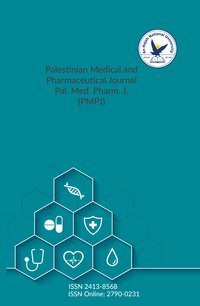A Review of chemical constituents and traditional usage of Neem plant (Azadirachta Indica)
Authors:
Article info
2017-02-02
2017-05-25
75 - 81
Keywords
- Neem
- Azadirachta Indica
- Phytochemistry
- Pharmacology
- Traditional remedies
Abstract
It was estimated from World Health Organization (WHO) that most of the world population depends on herbal medicine for their health care. Azadirachta Indica A.Juss also known as neem plant is one of the most popular medicinal plants in Asia and Africa which was used from the anceint times for many medicinal purposes. It is used in many traditional remedies because of its richness with biological active constituents. Some of these chemical constituents are Nimbidin, Nimbin, Nimbolide, Gedunin, Azadirachtin, Mahmoodin, Cyclic trisulphide and others which are used as antipyretic, anti-inflammatory, antibacterial, antigastric ulcer, antiarthritic, spermicidal antifungal, antimalarial, hypoglycemic, immunomodulatory, diuretic and antitumour. Traditionally differnet parts of the plant are used by populations from many countries for the treatment of several diseases such as leprosy, epistaxis, eye problem, elimination of intestinal worms, anorexia, skin ulcers, biliousness, skin diseases like ringworms, burning sensation, wounds and itching. It is also used as analgesic, alternative and curative of fever and urinary disorder. In addition, it is used in the treatment of cough, asthma, phantom tumour, spermatorrhoea, diabetes, blood morbidity, biliary afflictions and many more medicinal values. The present work provides comprehensive information on the traditional use value and the chemical constituent of Azadirachta Indica in order to explore the therapeutic potential, highlight the relation between the traditional use value and the chemical constituents and the scientific future research opportunities on Azadirachta Indica
Eid, A., Jaradat, N., & Elmarzugi, N. (2017). A Review of chemical constituents and traditional usage of Neem plant (Azadirachta Indica). Palestinian Medical and Pharmaceutical Journal, 2(2), 75–81. https://doi.org/10.59049/2790-0231.1060
[1]A. Eid, N. Jaradat, and N. Elmarzugi, “A Review of chemical constituents and traditional usage of Neem plant (Azadirachta Indica),” Palestinian Medical and Pharmaceutical Journal, vol. 2, no. 2, pp. 75–81, Dec. 2017, doi: 10.59049/2790-0231.1060.
Eid, Ahmad, et al. “A Review of Chemical Constituents and Traditional Usage of Neem Plant (Azadirachta Indica).” Palestinian Medical and Pharmaceutical Journal, vol. 2, no. 2, Dec. 2017, pp. 75–81. Crossref, https://doi.org/10.59049/2790-0231.1060.
1.Eid A, Jaradat N, Elmarzugi N. A Review of chemical constituents and traditional usage of Neem plant (Azadirachta Indica). Palestinian Medical and Pharmaceutical Journal [Internet]. 2017 Dec;2(2):75–81. Available from: http://dx.doi.org/10.59049/2790-0231.1060
Eid, Ahmad, Nidal Jaradat, and Nagib Elmarzugi. “A Review of Chemical Constituents and Traditional Usage of Neem Plant (Azadirachta Indica).” Palestinian Medical and Pharmaceutical Journal 2, no. 2 (December 2017): 75–81. https://doi.org/10.59049/2790-0231.1060.
A Review of chemical constituents and traditional usage of Neem plant (Azadirachta Indica)
المؤلفون:
معلومات المقال
2017-02-02
2017-05-25
75 - 81
الكلمات الإفتتاحية
- Neem
- Azadirachta Indica
- Phytochemistry
- Pharmacology
- Traditional remedies
الملخص
It was estimated from World Health Organization (WHO) that most of the world population depends on herbal medicine for their health care. Azadirachta Indica A.Juss also known as neem plant is one of the most popular medicinal plants in Asia and Africa which was used from the anceint times for many medicinal purposes. It is used in many traditional remedies because of its richness with biological active constituents. Some of these chemical constituents are Nimbidin, Nimbin, Nimbolide, Gedunin, Azadirachtin, Mahmoodin, Cyclic trisulphide and others which are used as antipyretic, anti-inflammatory, antibacterial, antigastric ulcer, antiarthritic, spermicidal antifungal, antimalarial, hypoglycemic, immunomodulatory, diuretic and antitumour. Traditionally differnet parts of the plant are used by populations from many countries for the treatment of several diseases such as leprosy, epistaxis, eye problem, elimination of intestinal worms, anorexia, skin ulcers, biliousness, skin diseases like ringworms, burning sensation, wounds and itching. It is also used as analgesic, alternative and curative of fever and urinary disorder. In addition, it is used in the treatment of cough, asthma, phantom tumour, spermatorrhoea, diabetes, blood morbidity, biliary afflictions and many more medicinal values. The present work provides comprehensive information on the traditional use value and the chemical constituent of Azadirachta Indica in order to explore the therapeutic potential, highlight the relation between the traditional use value and the chemical constituents and the scientific future research opportunities on Azadirachta Indica
Eid, A., Jaradat, N., & Elmarzugi, N. (2017). A Review of chemical constituents and traditional usage of Neem plant (Azadirachta Indica). Palestinian Medical and Pharmaceutical Journal, 2(2), 75–81. https://doi.org/10.59049/2790-0231.1060
[1]A. Eid, N. Jaradat, and N. Elmarzugi, “A Review of chemical constituents and traditional usage of Neem plant (Azadirachta Indica),” Palestinian Medical and Pharmaceutical Journal, vol. 2, no. 2, pp. 75–81, Dec. 2017, doi: 10.59049/2790-0231.1060.
Eid, Ahmad, et al. “A Review of Chemical Constituents and Traditional Usage of Neem Plant (Azadirachta Indica).” Palestinian Medical and Pharmaceutical Journal, vol. 2, no. 2, Dec. 2017, pp. 75–81. Crossref, https://doi.org/10.59049/2790-0231.1060.
1.Eid A, Jaradat N, Elmarzugi N. A Review of chemical constituents and traditional usage of Neem plant (Azadirachta Indica). Palestinian Medical and Pharmaceutical Journal [Internet]. 2017 Dec;2(2):75–81. Available from: http://dx.doi.org/10.59049/2790-0231.1060
Eid, Ahmad, Nidal Jaradat, and Nagib Elmarzugi. “A Review of Chemical Constituents and Traditional Usage of Neem Plant (Azadirachta Indica).” Palestinian Medical and Pharmaceutical Journal 2, no. 2 (December 2017): 75–81. https://doi.org/10.59049/2790-0231.1060.

Since 2022
Cite Score (Scopus): 0.8
Time to First Decision: 3 Days
Submission to Acceptance: 45 Days
Acceptance to Publication: 64 Days
Acceptance Rate: 17%
Why should you
Publish With Us?
An-Najah National University
Nablus, Palestine
Nablus, Palestine
- P.O. Box
- 7, 707
- Fax
- (970)(9)2345982
- Tel.
- (970)(9)2345560
- (970)(9)2345113/5/6/7-Ext. 2628
- [email protected]
- EIC
- Prof. Waleed Sweileh
The Palestinian Medical and Pharmaceutical Journal (Pal. Med. Pharm. J.) © 2024 by An-Najah University, Nablus, Palestine is licensed under CC BY-NC 4.0
News and Views
